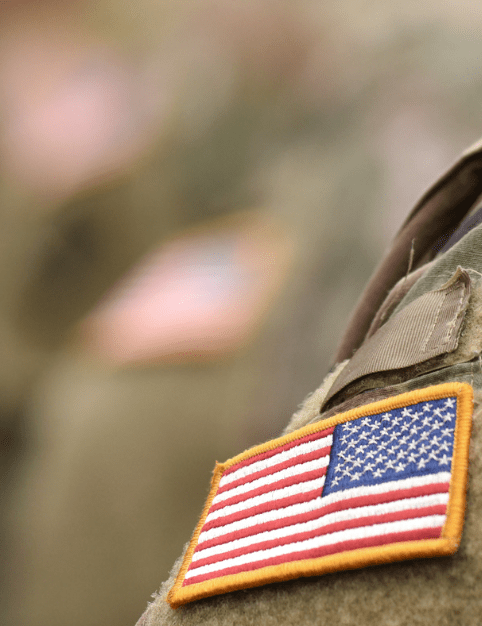The U.S. military used depleted uranium to create armor-piercing bullets and armor plating on Abrams tanks to protect the troops. In doing so, they mistakenly created a health hazard that affected the short- and long-term health of veterans.
What is Depleted Uranium?
Depleted uranium is a form of metal that is the result of the manufacturing of uranium in nuclear reactors. During this process some of the radioactivity is removed in order to concentrate it to create an “enriched product.” Specifically, it is “depleted” of about 40% of its radioactivity.
The heavy metal is used to armor tanks and incorporated into bullet casings to penetrate armored vehicles. This heavy metal began being used by the U.S military between the years 1990 and 1991 in the Gulf War. Even with a lower radioactivity level than natural uranium, high and long-term exposure can cause serious and long-term health concerns.
How Were Veterans Exposed to Depleted Uranium?
When an object, like a bullet, penetrates a vehicle small pieces of depleted uranium can scatter and become embedded in a person’s muscle or soft tissue. Additionally, Gulf War veterans may have been exposed by inhalation or accidentally swallowing small airborne particles.
· Inhalation: This is the most likely and common route of exposure. Inhalation typically occurred during or following the use of depleted uranium munitions. Accidental inhalation may also occur as the result of a fire in a depleted uranium storage facility, aircraft crash, or the decontamination of vehicles from conflict areas.
· Ingestion: Commonly would occur if food or drinking water became contaminated with depleted uranium.
· Body Retention: Most of the depleted uranium that enters the body is not retained by the body. However, depleted uranium does stay in the body when the source of exposure is from fragments and shrapnel.
Gulf War veterans that may have been exposed to depleted uranium are those who:
· Were in or near vehicles hit with friendly fire
· Were entering or near burning vehicles
· Were near fires involving depleted uranium munitions
· Were salvaging damaged vehicles
Health Problems from Depleted Uranium
There are two basic types of risks associated with exposure to depleted uranium:
· Radiological: There are no known scientific links that depleted uranium causes cancer in humans. However, long-term exposure to radioactive dust can lead to accumulation in lungs which can lead to lung, lymph, and brain cancers. Studies have also shown that depleted uranium may lead to genetic birth defects in children of exposed veterans.
· Chemical Toxicity: According to the World Health Organization, the main health risk associated with chemical exposure is kidney damage. This means that veterans with embedded fragments should be monitored for kidney problems.
In addition, many Gulf War veterans have conditions associated with depleted conditions such as:
· Chronic fatigue syndrome
· Neurological disorders
· Upper & lower respiratory conditions
· Menstrual disorders
VA’s Depleted Uranium Follow-Up Program The VA and the Department of Defense has established the Depleted Uranium Follow-Up Program at the Baltimore VA Medical Center to screen and monitor veterans for health problems associated with exposure to depleted uranium.
The program targets two main groups: (1) veterans who were on or in vehicles hit with depleted uranium friendly fire; and (2) rescuers entering burning vehicles and those near burning vehicles or near fires involving depleted uranium munitions.
To be eligible for the program the VA requires active duty service in any of the conflicts listed:
· Gulf War
· Bosnia
· Operation Enduring Freedom
· Operation Iraqi Freedom
· Operation New Dawn
VA Claims for Depleted Uranium Exposure
Although exposure to depleted uranium is linked to health problems among Gulf War veterans, because of the lack of conclusive evidence there is no presumption available for service connection. If a veteran can show that they had high exposure to depleted uranium during service, and can get a doctor’s opinion that their condition was “as likely as not” cause by the exposure, they can prove service-connection that way.
At Veterans Help Group we have 24 years of experience fighting for veteran and we are confident in our ability to hold the VA accountable. We can help, contact the
experienced advocates at Veterans Help Group to evaluate your claims. Call us at 855-855-8992 or complete our free veterans benefits case evaluation form.

How to Apply for VA Disability Compensation
It's one thing to know how to apply for VA disability compensation. It's another to understand the...

What is the VA DBQ?
What is the VA DBQ? A VA Disability Benefits Questionnaire (DBQ) is a form used to convey...

Most Commonly Approved VA Disability Claims
Most Commonly Approved VA Disability Claims Veterans receive VA disability benefits for a wide...





